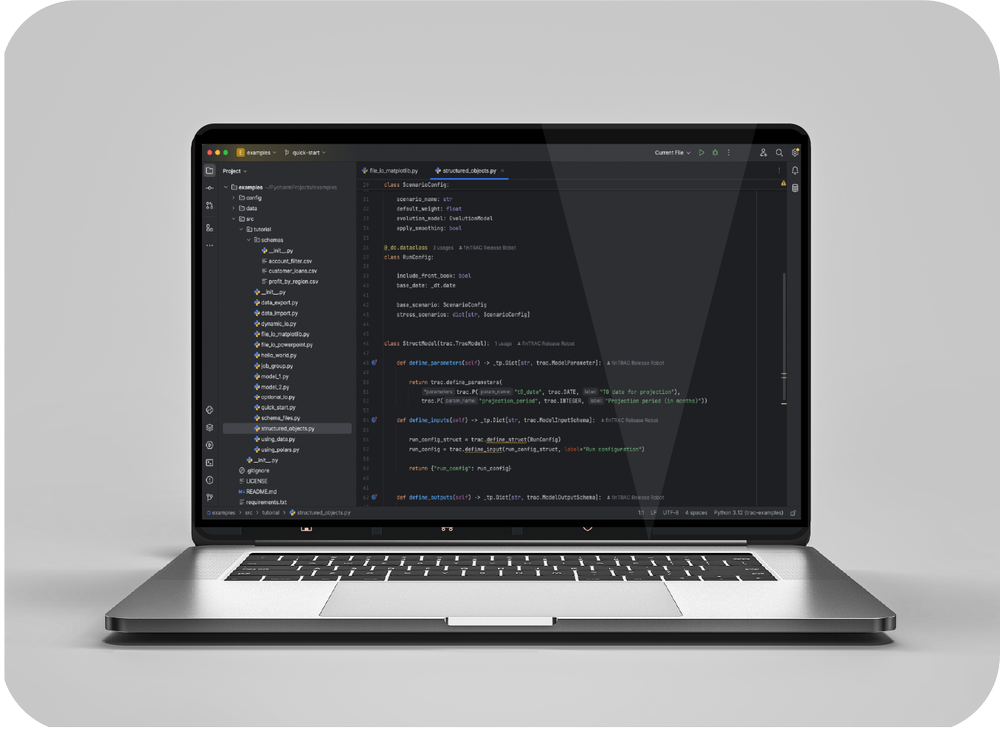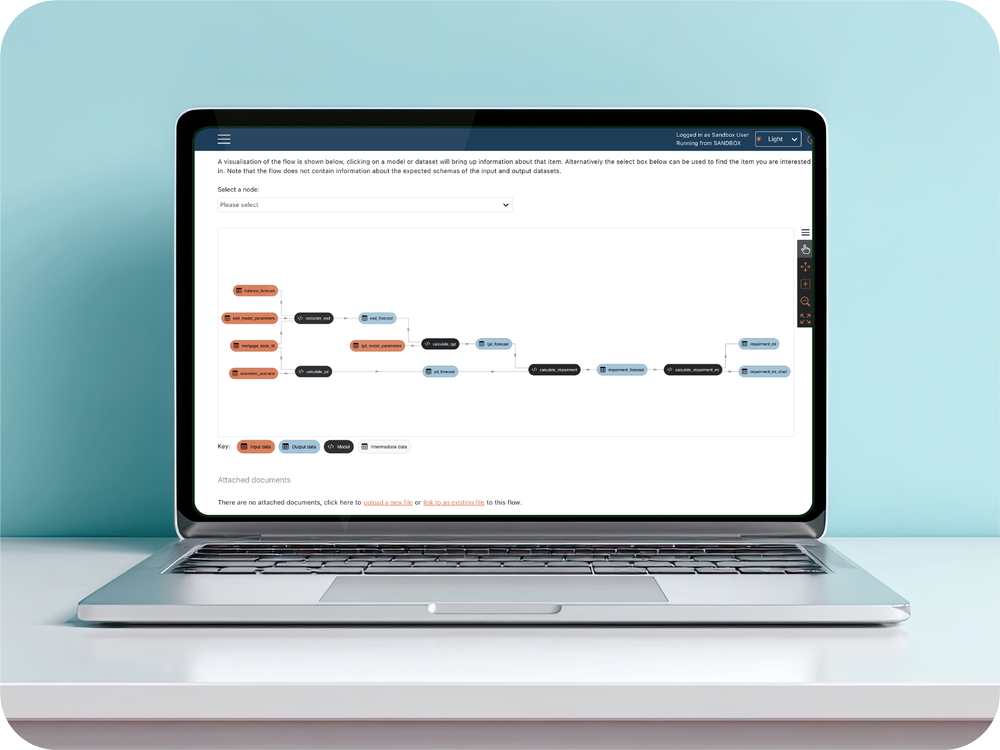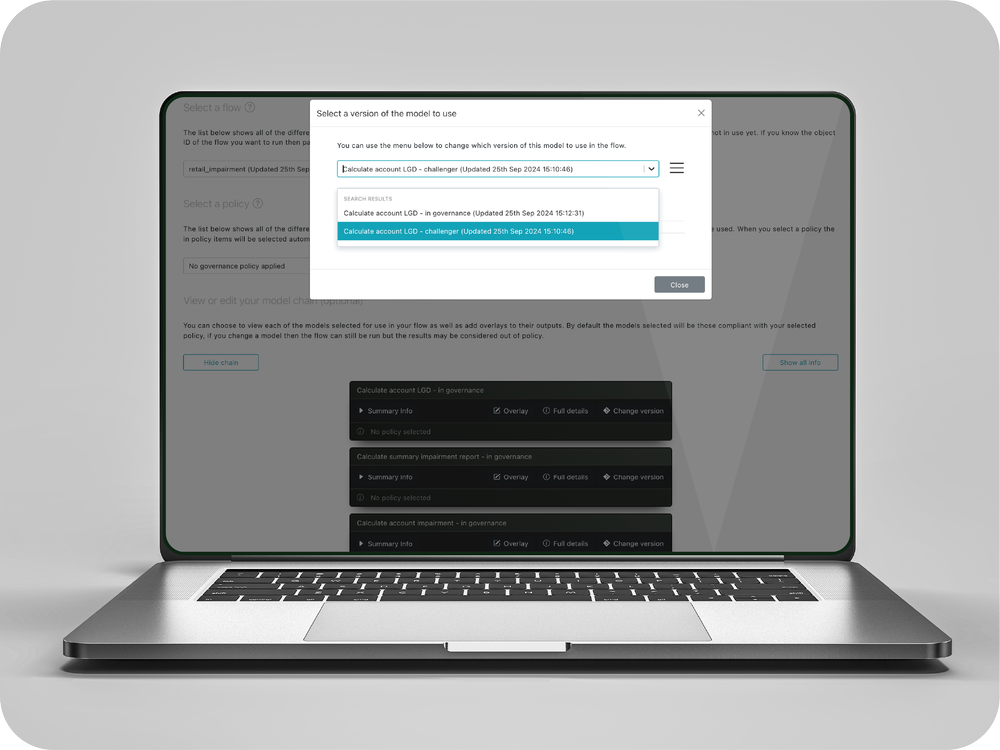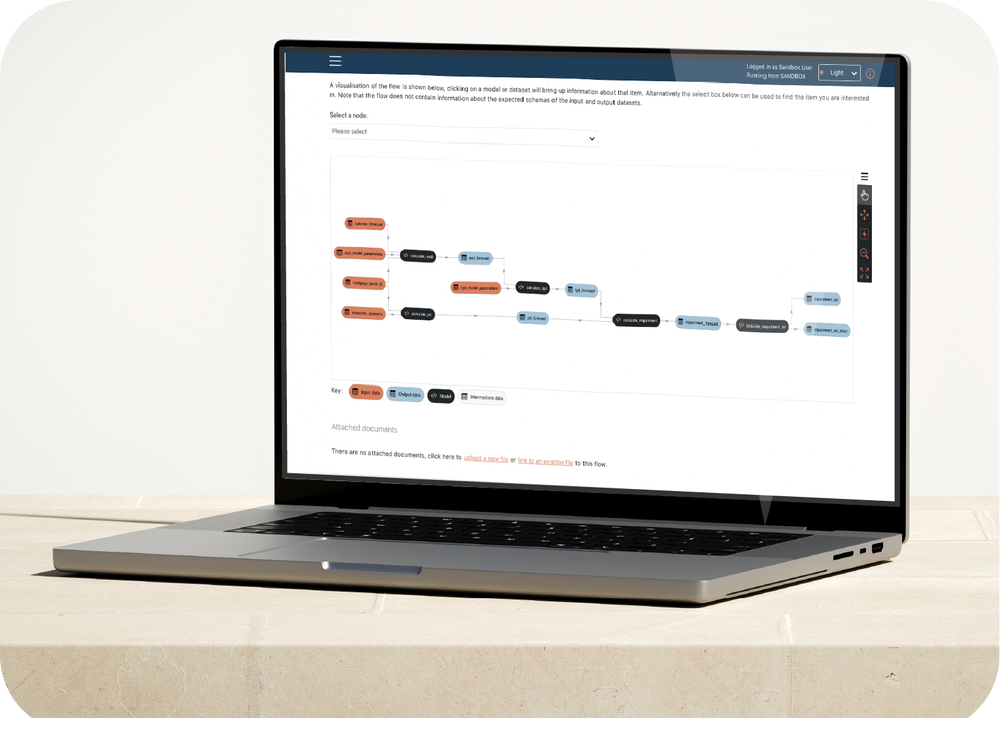Virtual deployment framework
A better way to build, deploy and use models
The benefits of virtual deployment

Models are ‘promoted’ to production in a few minutes, with zero risk, zero code modification and no platform-level intervention.
Deploy in minutes!

Using the native capabilities of the repository, trac retains a complete and immutable version history of every model in use on the platform.
Complete auditability!

There's no single primary deployment, so experimental model runs can be configured and executed without affecting your ‘production’ processes.
Total flexibility, total control!

The platform remembers which model version was used in each job. Because that version is always available in the repository, the job can be recreated.
Re-run with just a few clicks!
Portable models
The trac model runtime
We understand the pain involved in deploying and maintaining models, which is why we built the trac model runtime — a lightweight, open-source package for building portable, production-strength Python models that can be executed anywhere.
Explore model runtime

Self-descrbing models
Model schemas and the trac model API
Models declare their schema’s (inputs, outputs, parameters) and trac guarantees the model always receives appropriate inputs wherever it runs - taking responsibility for data marshalling out of the model code so developers can focus on building better models.
Build trac models